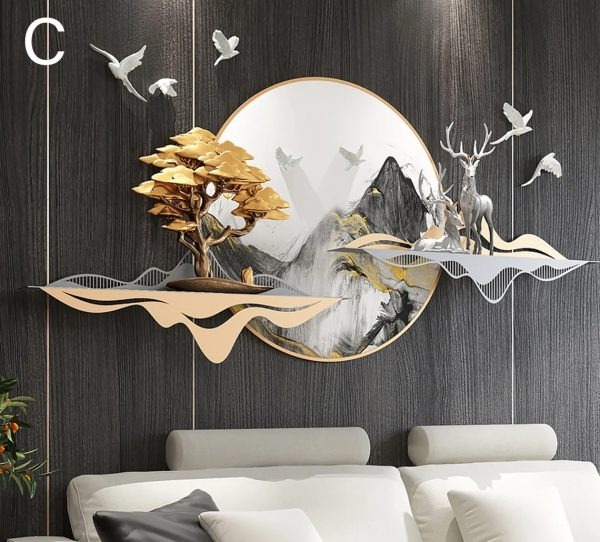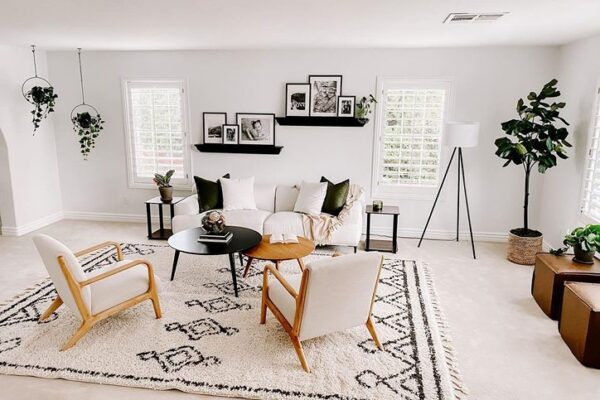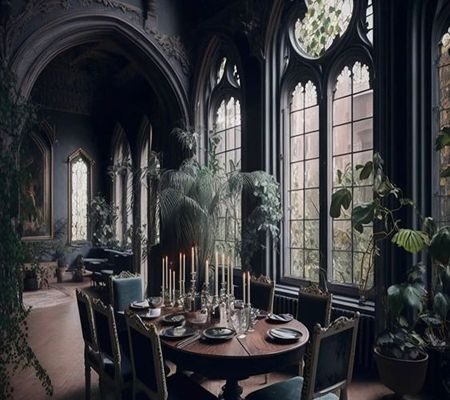The Secrets to Successful Room Design
Room design is a creative process that involves carefully planning and arranging furniture, colors, and accessories to create a cohesive and aesthetically pleasing space. Hiring a professional interior designer can greatly assist you in achieving your desired room design, as they have the expertise to bring together various elements and create a harmonious and functional environment.
Whether you lack the financial resources to hire an interior designer or simply enjoy the idea of undertaking the project yourself, the task of designing a room from scratch can be daunting for those who are unfamiliar with it.
It’s important to recognize that interior design is more of an art than a science, and there are no strict rules on how to decorate a room. However, if you’re seeking guidance, this comprehensive guide will outline all the necessary steps to help you design your space like a professional.
1. Establish the Atmosphere
Instead of focusing solely on the visual appearance of your space, consider how you want it to feel. Allow your desired atmosphere to guide your decisions regarding colors, textures, furniture options, and decor. For example, if you’re aiming for a light and serene zen oasis, you may lean towards minimal furniture and natural materials.
On the other hand, if you want an energizing and casual family space, bold colors and patterns might be more suitable. Prioritizing mood over specific styles or trends will enable you to create an eclectic space that resonates with your preferences.
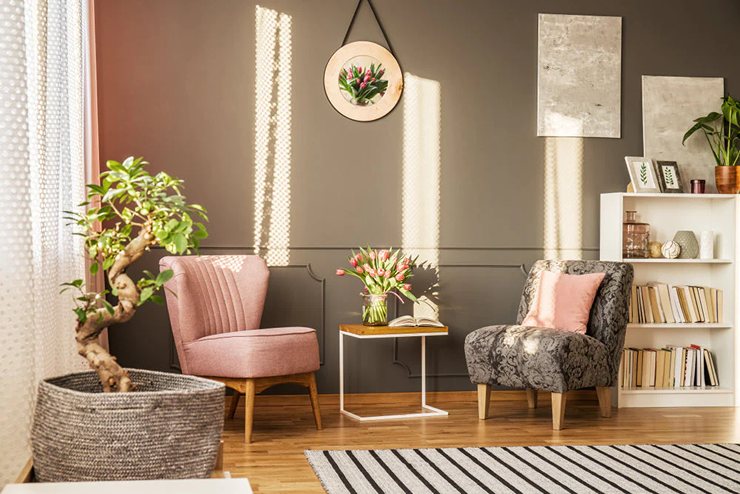
2. Seek Inspiration
Browse through your favorite social media platforms, interior design magazines, books, and websites to find inspiration. Analyze the places you enjoy escaping to and consider what appeals to you about them. If you find mood boards helpful, create one for yourself. If you live alone, this is an opportunity to gain a deeper understanding of your personal taste.
For example if you are most attractive to trendy and modernism but also prefer minimalism you can go with combination of blue and pink just as picture show. If you share your living space with others, it’s a chance to collaborate on creating a shared space that reflects the preferences of everyone involved.
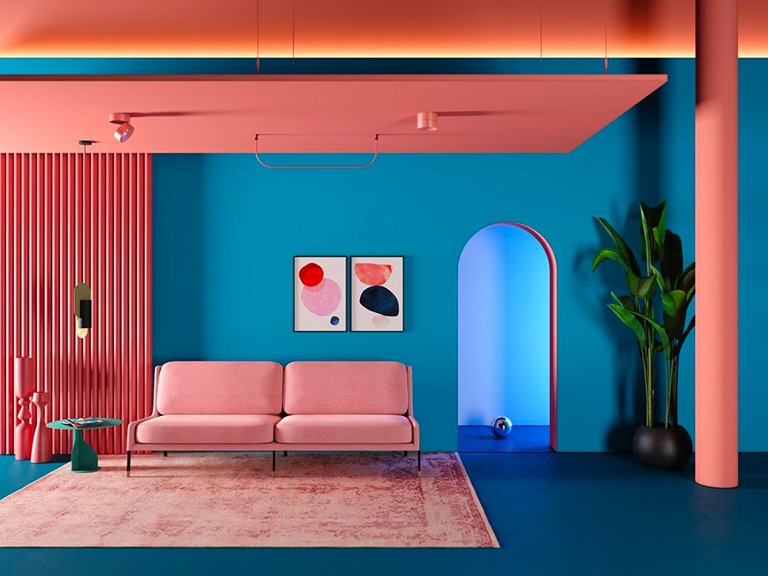
3. Be Realistic
Instead of striving for an idealized vision of how you think your life should look, design your space according to how you currently live. If you have energetic children or pets, opt for upholstery fabrics and surfaces that can withstand wear and tear while still looking great. If you live alone and rarely entertain guests, there’s no need to allocate significant floor space to a large dining table.
If you work from home, consider moving your makeshift office from the corner of the living room to a spare room that is typically only utilized during holidays. Before making any purchases, establish a realistic budget that will help you prioritize your spending throughout the process.
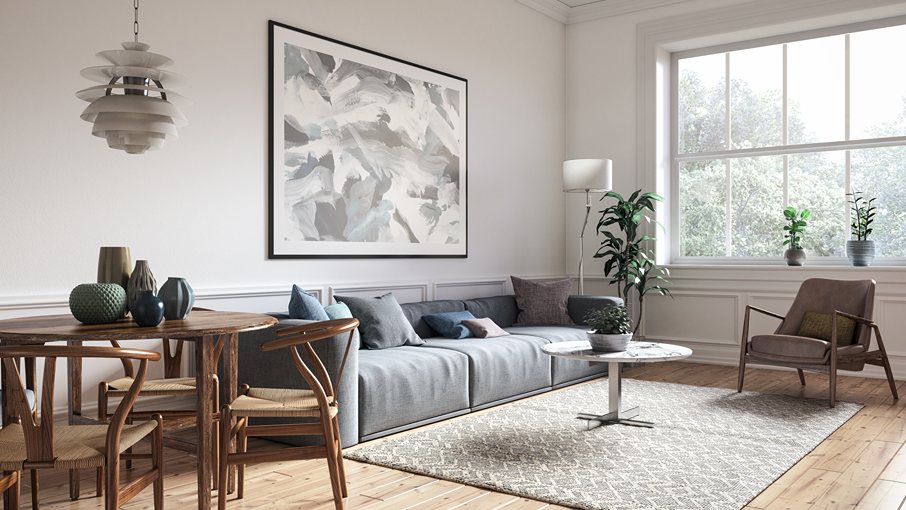
4. Declutter
If you’re redecorating, begin by removing anything that you don’t use, need, or truly cherish. If you’re starting with an empty room, carefully consider each item before introducing it. While personal items and meaningful possessions have their place in any space, effective interior design starts by embracing the essential elements and building upon them.

5. Plan the Layout
Numerous online tools and home design software are available for creating detailed floorplans. However, space planning doesn’t have to be excessively technical. Sketch out different layout ideas on paper or use painter’s tape to mark furniture placement and gauge scale and flow. Before purchasing any furniture, take accurate measurements of your space, ensuring you double-check to avoid issues such as ordering a sofa that won’t fit through your front door or one that’s too small for your living room.
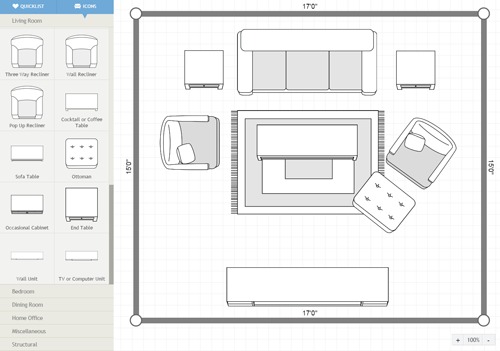
6. Decide on a Color Scheme
Early on in the design process, choose whether you want to maintain a neutral palette or opt for a bold and eye-catching color scheme. Making this decision will assist you in creating a cohesive look. Neutral rooms can be enhanced with easily changeable accessories.
If you’ve decided on a specific color, such as green, pink, or blue, select three complementary shades to add interest. For example a picture has shown three different shades of olive green to add charm in the room. If an all-white room appeals to you, sticking to various shades of white allows for mixing and matching furniture styles and periods with ease.
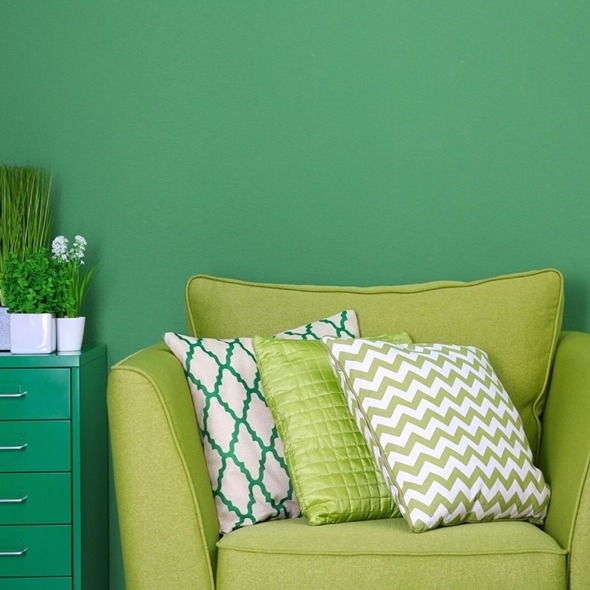
7. Commence with the Finishing Touches
If your goal is to revamp the room rather than undergo a complete remodel, consider how you can enhance the existing flooring, wall color, and fixtures to personalize and beautify the space without undertaking extensive renovations.
If you’re starting with an empty room, prioritize refinishing the floors, painting the walls, adding tile, wallpaper, or wall panels, or installing cabinetry before bringing in furniture and accessories.
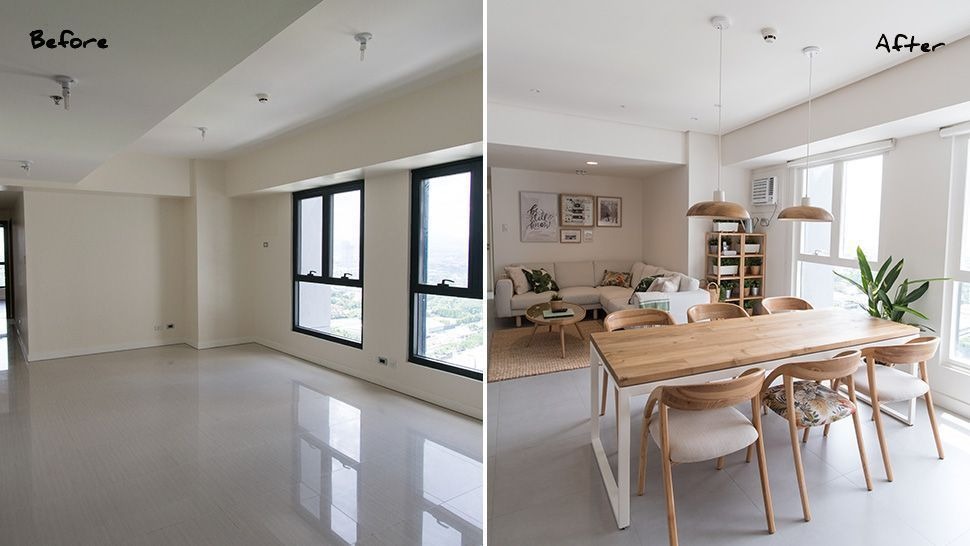
8. Opt for Key Pieces
When designing a living room, place your focus on selecting a key piece, typically a sofa, before delving into the details of throw pillows and accents. By making your largest and most significant purchases first, you ensure that you allocate sufficient funds for high-use items and maintain a realistic understanding of your budget. Additionally, visualizing the space available for additional furniture becomes easier once the core pieces are in place.
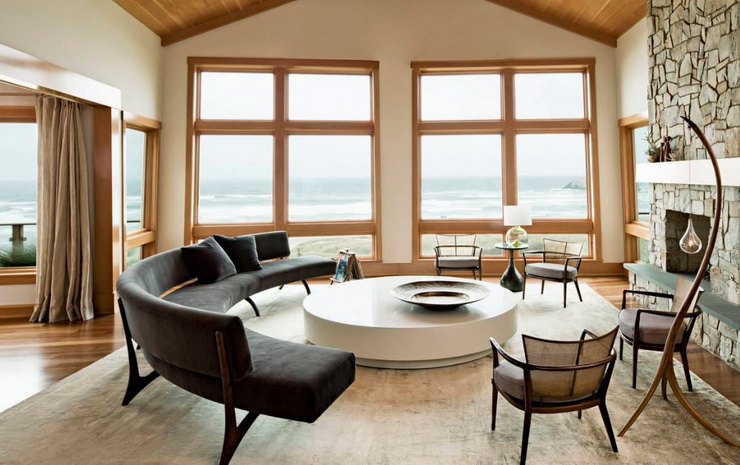
9. Choose Supplementary Furniture
After finding the perfect sofa, shift your attention to selecting secondary furniture, such as coffee tables, to determine appropriate sizes and styles. Consider whether an oversized pouf might be a better fit.
If you opt for a rustic wooden farm table in the dining room, create contrast by pairing it with contemporary metal chairs just as below picture. Enhance a modern upholstered headboard by incorporating vintage lighting or bedside tables.
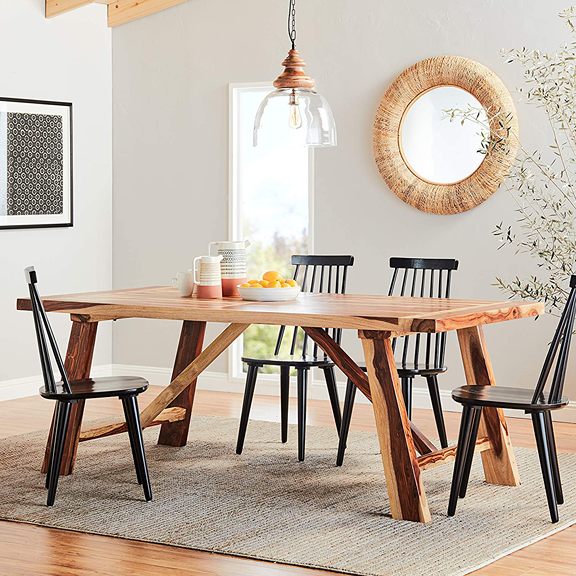
10. Select Rugs, Curtains, and Textiles
With an understanding of how the room flows, proceed to choose rugs, curtains, and textiles such as bedding, throws, and decorative pillows. These selections should complement your key pieces, adding color, pattern, texture, and visual interest to the space.
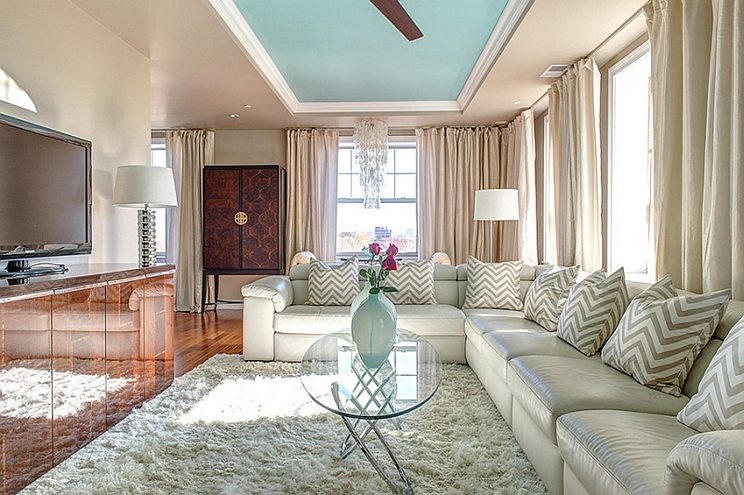
11. Illuminate the Space
Lighting plays a crucial role in successful room design. Make the most of natural light during the daytime and incorporate layered lighting options for the evening.
These may include functional task lighting, warm ambient table lamps or sconces, and sculptural pendant lighting that serves as both illumination and decor. Ensure that all four corners of the room are well-lit to prevent the creation of shadows and foster a sense of well-being after sunset.
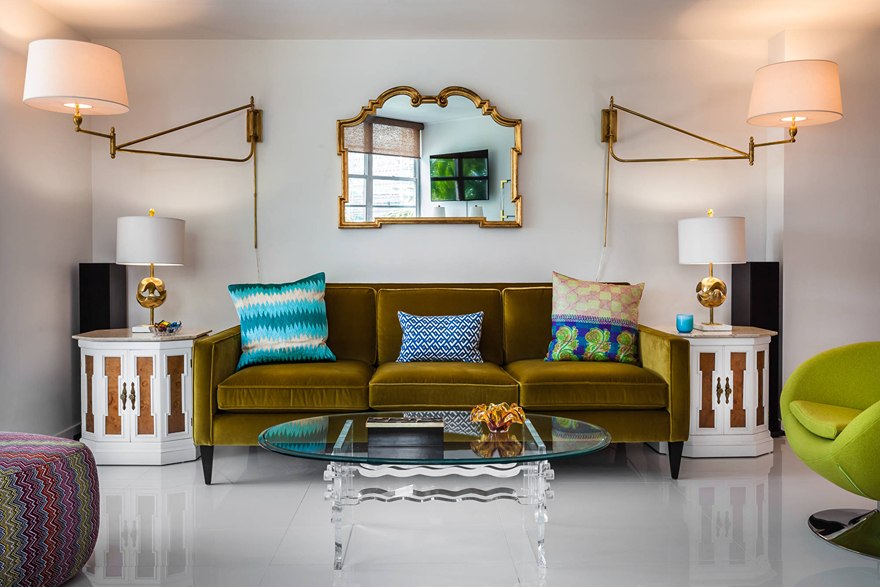
12. Add the Finishing Touches
Now that you have all the essential elements in place, take a step back and consider what might be missing. Choose and hang art, photographs, or decorative mirrors that reflect your personal taste. For example a picture shows a bedroom wall decor with luxury gold and silver hanging sculpture of deer and trees with beautiful mountain backdrop geometrical metal wall art.
Layer with additional decorative pillows and throws to enhance comfort and aesthetics. Style shelves and tables with design books, candles, decorative objects, plants, or cherished souvenirs. This is your opportunity to incorporate personal touches that add texture and bring the room to life, making it truly feel like a home.
